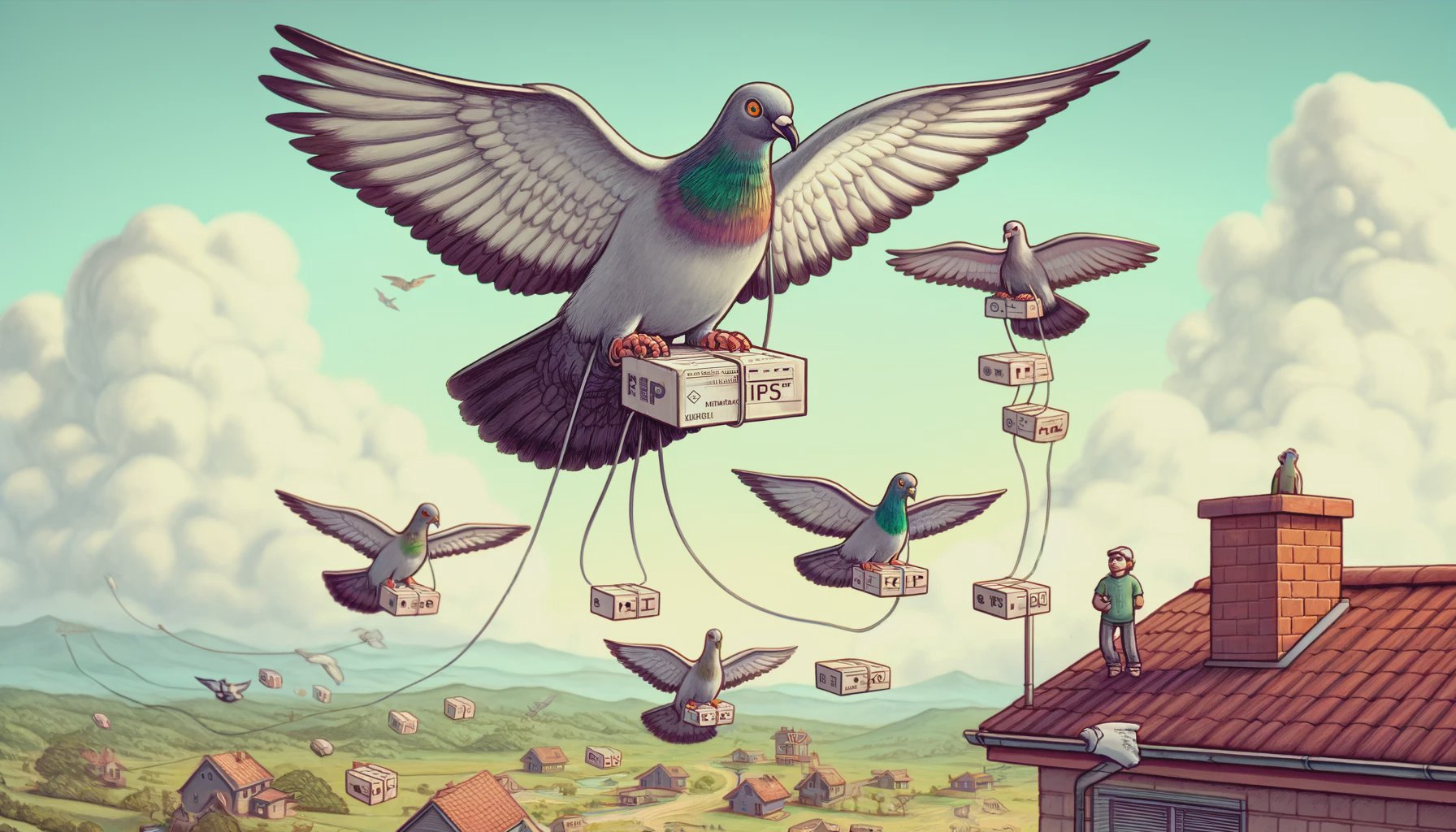When you think of internet protocols, you probably imagine a complex web of wires, satellites, and servers working tirelessly to transmit data across the globe. However, not all internet protocols are created with such seriousness. Enter RFC 1149 and RFC 2549, the quirkiest and most humorous protocols ever to be conceived in the tech world.
RFC 1149: IP over Avian Carriers
RFC 1149, formally known as “A Standard for the Transmission of IP Datagrams on Avian Carriers,” was introduced on April 1, 1990. This tongue-in-cheek proposal by the Internet Engineering Task Force (IETF) describes a method for transmitting data packets using carrier pigeons.
The protocol outlines the use of homing pigeons to carry messages between nodes. Each pigeon, equipped with a small data packet, would fly from the source to the destination, delivering the information. The transmission speed, of course, would depend on the flight speed of the pigeon and its ability to avoid predators or adverse weather conditions. Packet loss could be significant if the pigeons decided to take a detour or if a hawk was feeling particularly hungry that day.

RFC 2549: IP over Avian Carriers with Quality of Service
Building on the success (and humor) of RFC 1149, RFC 2549 was introduced on April 1, 1999, adding a modern twist with “Quality of Service” (QoS) enhancements. This update suggested ways to improve the reliability and performance of the avian carrier system.
The enhancements included recommendations for better training of pigeons to ensure more accurate delivery, the use of higher-quality bird seed to improve pigeon performance, and the implementation of larger data packets for efficiency. The protocol also humorously considered the environmental impact, suggesting the use of biodegradable materials for the data packets.

The Real-Life Test
As absurd as it sounds, RFC 1149 was actually tested in real life. In 2001, a group of Norwegian Linux enthusiasts decided to put the protocol to the test. They successfully transmitted a data packet using homing pigeons, proving that while the concept was initially a joke, it was technically feasible. The data transmission was slow, but it added a delightful touch of whimsy to the typically serious field of computer networking.
Why Do These Protocols Matter?
Beyond the humor, RFC 1149 and RFC 2549 serve as a reminder that creativity and fun have a place even in the most technical fields. They highlight the importance of thinking outside the box and not taking everything too seriously. These protocols have become legendary in the tech community, celebrated for their wit and the light-hearted break they offer from the usual rigors of internet protocol development.